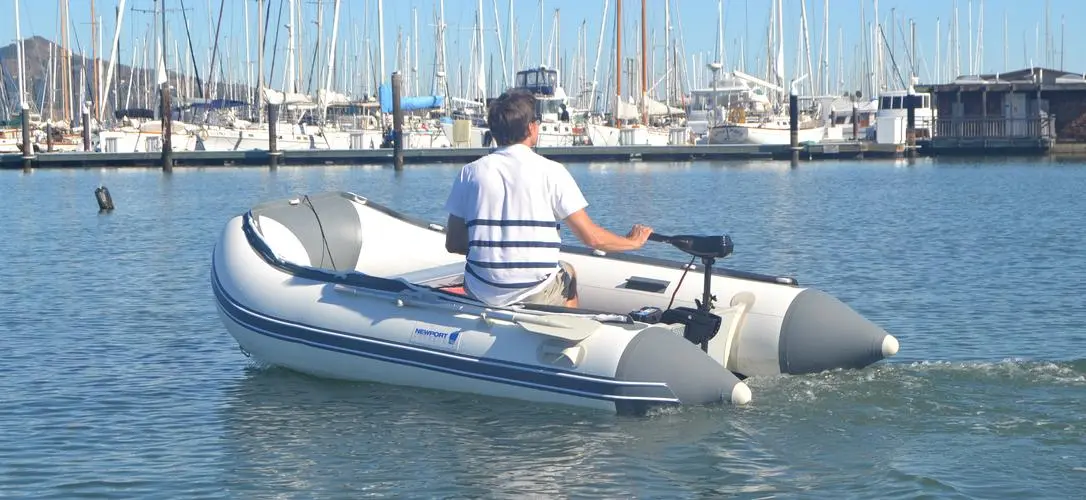Choosing the Best Trolling Motor Battery: A Comprehensive Guide

Choosing the right trolling motor battery can be tricky with so many options out there. This guide will help you understand the different types of batteries, key performance specs, and how to select the best one for your needs. We'll also provide charging tips and answer some common questions to help you get the most out of your trolling motor battery.
Part 1: What is a Trolling Motor Battery?
A trolling motor battery is a specialized battery designed to power the electric trolling motor on your boat. Unlike standard car batteries, these batteries are built to deliver steady power over long periods, allowing you to cruise or fish without interruptions. They can handle deep discharges, meaning you can drain and recharge them many times without significant damage, making them perfect for long days on the water.
Part 2: Types of Trolling Motor Batteries
Choosing the right type of trolling motor battery is essential. Here’s a look at the most common types, along with their pros and cons:
-
Lead-Acid Battery
- Advantages: Most affordable and widely available.
- Disadvantages: Heavy, shorter lifespan, and requires regular maintenance (like checking water levels).
- Ideal for: Budget-conscious boaters who don’t mind some upkeep.
-
AGM (Absorbent Glass Mat) Battery
- Advantages: Maintenance-free, spill-proof, longer lifespan, and performs well in cold weather.
- Disadvantages: More expensive than lead-acid batteries.
- Ideal for: Boaters looking for a hassle-free, reliable option.
-
Lithium-Ion Battery
- Advantages: Lightweight, long lifespan, quick charging, and can handle more charge cycles than lead-acid or AGM batteries.
- Disadvantages: Higher initial cost, but more cost-effective in the long run due to their longevity.
- Ideal for: Serious anglers who need efficient, long-lasting power and don’t mind a larger upfront investment.
For the ultimate performance, consider lithium (LiFePO4) trolling motor batteries. They last up to 10 times longer than lead-acid batteries, offer deep cycle capabilities, and require minimal maintenance. Lithium batteries also charge quickly and weigh significantly less.
Part 3: Key Performance Specifications for Trolling Motor Batteries
When selecting the best trolling motor battery, consider the following performance specifications:
- Voltage: Most trolling motors use 12V, 24V, or 36V batteries. Check your motor’s requirements.
- Capacity (Ah): The higher the amp hours (Ah), the longer the battery can run.
- Reserve Capacity (RC): The time a fully charged battery can supply 25 amps before dropping below 10.5 volts.
- Weight: Important if you need to move the battery often.
- Dimensions: Ensure the battery fits your boat’s battery compartment.
Part 4: How to Choose the Right Trolling Motor Battery
To select the right trolling motor battery, consider these factors:
- Boat Size and Weight: Larger boats need more powerful batteries.
- Usage Duration: For long trips, choose a battery with higher capacity (Ah).
- Budget: Lead-acid batteries are cheaper upfront, while AGM and lithium-ion offer better long-term value.
- Maintenance Needs: AGM and lithium-ion batteries require less maintenance.
- Availability: Make sure the battery type is readily available in your area for easy replacement.
Part 5: Understanding Trolling Motor Battery Charging
-
Charging Tips:
- Fully recharge the battery after each use to prevent sulfation (a buildup that reduces capacity).
- Use a charger specifically designed for deep-cycle batteries to avoid overcharging.
- Charge in a well-ventilated area to avoid hydrogen gas buildup.
- Store unused batteries in a cool, dry place, and recharge every 4-6 weeks.
-
Types of Chargers:
- Onboard Chargers: Built into the boat, charging automatically when plugged in.
- Portable Chargers: Separate units that you can use as needed.
- Multi-Bank Chargers: Charge multiple batteries simultaneously.
- Automatic/Smart Chargers: Feature multi-stage charging, temperature adjustment, and auto shut-off.
Part 6: When to Replace Your Trolling Motor Battery
Signs that it might be time to replace your battery include:
- Age: Most batteries last 2-3 years with proper care.
- Reduced Runtime: Your motor runs for less time than before.
- Charging Issues: The battery takes longer to charge or won’t hold a charge.
- Physical Damage: Cracks, leaks, or other damage.
- Sulfation: Lead-acid batteries may develop sulfate buildup, reducing capacity.
- Reduced Power: Your motor has less thrust than it used to.
Replace your battery every 2-3 years or at the first sign of performance issues.
Part 7: Why Deep Cycle Batteries are the Best for Trolling Motors
Deep cycle batteries are designed to handle the repeated charging and discharging that trolling motors require. They have thicker plates that can withstand deep discharges without damage, giving them a longer lifespan compared to standard batteries. Investing in a dedicated deep cycle battery will ensure your trolling motor runs efficiently and lasts longer, saving you money in the long run.
Edit by paco


